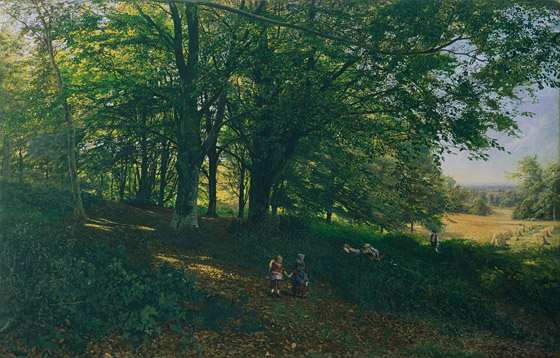Shade
August 16, 2011

Rest in the Cool and Shady Wood, Edmund George Warren, 1861. Exhibited at the New Society of Painters in Watercolours in 1861.
BREAK OFF an elm bough three feet long, in full leaf, and lay it on the table before you, and try to draw it, leaf for leaf. It is ten to one if in the whole bough (provided you do not twist it about as you work) you find one form of leaf exactly like another; perhaps you will not even have one complete. Every leaf will be oblique, or foreshortened, or curled, or crossed by another, or shaded by another, or have something or other the matter with it; and though the whole bough will look graceful and symmetrical, you will scarcely be able to tell how or why it does so, since there is not one line of it like another.
But if nature is so various when you have a bough on the table before you, what must she be when she retires from you, and gives you her whole mass and multitude? The leaves then at the extremities become fine as dust, a mere confusion of points and lines between you and the sky, a confusion which, you might as well hope to draw sea-sand particle by particle, as to imitate leaf for leaf.
— John Ruskin, Modern Painters, Vol. I, Pt. 2, Ch. 1.
